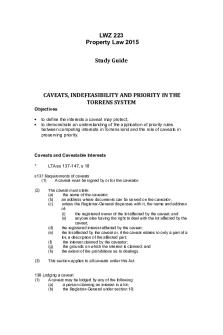Lecture 11 Study Questions PDF

| Title | Lecture 11 Study Questions |
|---|---|
| Author | Jaidan Lam |
| Course | Introduction to Human Anatomy and Physiology |
| Institution | Oregon State University |
| Pages | 2 |
| File Size | 77 KB |
| File Type | |
| Total Downloads | 63 |
| Total Views | 145 |
Summary
study questions answered to help prepare for exams. ...
Description
Study Questions Lecture 11 Objectives: • Describe (order) how bones form in the embryo through Endochondral & Intramembranous ossification • Define the role of bone cells in bone formation and growth • Relate bone formation processes to bone remodeling processes, including how the endosteum and periosteum contribute Take Home Messages • Bone forms in two ways: intramembranous and endochondral ossification • Intramembranous ossification replaces mesenchyme tissue with bone • Endochondral ossification involves replacing an avascular cartilaginous model with a highly vascular bony model • A bone (organ) cannot grow through interstitial growth without cartilage – calcification prevents interstitial osseous tissue growth • Endochondral ossification continues throughout adolescence at growth plates • Sex hormones affect rate of bony formation causing growth plate to close and bones to cease growing in length • Bone remodels throughout life due to activity at endosteal and periosteal surfaces Big Picture: 1. Is bone vascular? yes 2. Is cartilage vascular? no 3. During ossification, one tissue type is replaced by ___bone______. Details: 1. From what embryonic tissue do all connective tissues arise? mesenchyme 2. In the process of intramembranous ossification: a. Bone replaces what type of existing tissue? Connective tissue b. What are the steps of intramembranous ossification (you do not need to know absolute numbers, but instead know what step precedes another)? Mesenchymal cells differentiate into osteoblasts Osteoblasts deposit osteoid that later calcifies into bone. Small units of bone unite into trabeculae. Osteoblasts and osteoclasts surround the developing bone, forming the periosteum Periosteum deposits compact bone and remodels trabeculae c. What is an ossification center? It is the site where bone begins to form in the shaft of a long bone or the body of an irregular bone- primary ossification center. The site where bone formation continues after beginning in the long shaft or body of the bone, is an epiphysis- secondary ossification center. d. Intramembranous ossification occurs in which bones of the body? The clavicle, mandible and may flat bones of the skull. 3. Regarding cartilaginous structures: a. What is a mature cartilage cell called? chondrocytes b. How does cartilage obtain its nutrients for growth (is cartilage vascular)? Cartilage is avascular and obtain its nutrients from blood vessels in the perichondrium and surrounding connective tissues. 4. In the process of endochondral bone formation:
a. Bone replaces what type of existing tissue? Cartilage b. What are the broad steps of endochondral ossification? How are chondrocytes, osteoblasts & osteoclasts involved? bone collar forms around hyaline cartilage cartilage in the center of the diaphysis calcifies and then develops cavities the periosteal bud invades the internal cavities and spongy bone begins to form the diaphysis elongates and a medullary cavity forms as ossification continues. Secondary ossification centers appear in the epiphyses in prep for step 5 the epiphyses ossify. Hyaline cartilage remains only in the epiphyseal plates and articular cartliages. c. Why must cartilage die before blood vessels can invade? Because cartilage is avascular and doesn’t allow blood vessels to invade d. Why must blood vessels arrive before bone can form? the blood vessels deliver the osteoblasts to form the bone. e. What is the difference between the primary and secondary ossification centers in terms of location on bone? Which ossification center forms first? Primary ossification center is the first to start ossifying in prenatal development in the central part of the developing bone (diaphysis) and in irregular bones it is in the body of the bone. Secondary appears after the primary. 5. Is the bone in your adult skeleton the same bone you had when you were born? What is the relationship between osteoblasts, osteoprogenitor (osteogenic) cells, osteocytes and osteoclasts in this process of constant remodeling? No your bones when you were born were mainly cartilage. Clinical Correlations: 1. Which do you think would be more detrimental to the development of the femur, a mid-shaft fracture or a fracture of the growth plate? Why?...
Similar Free PDFs

Lecture 11 Study Questions
- 2 Pages

Chapter 11 Study Questions
- 7 Pages

Lecture 11 - Practice Questions
- 5 Pages

Lecture 23 Study Questions
- 2 Pages

Lecture 7 Study Questions-1
- 3 Pages

Lecture 25 Study Questions-1
- 3 Pages

11 - Lecture notes 11
- 14 Pages

Lecture 11 - Study of the heart
- 4 Pages

Lecture EE333 - lecture 11
- 21 Pages

Lecture 11
- 2 Pages

Chapter 11 - Lecture notes 11
- 9 Pages

Chapter 11 - Lecture notes 11
- 3 Pages
Popular Institutions
- Tinajero National High School - Annex
- Politeknik Caltex Riau
- Yokohama City University
- SGT University
- University of Al-Qadisiyah
- Divine Word College of Vigan
- Techniek College Rotterdam
- Universidade de Santiago
- Universiti Teknologi MARA Cawangan Johor Kampus Pasir Gudang
- Poltekkes Kemenkes Yogyakarta
- Baguio City National High School
- Colegio san marcos
- preparatoria uno
- Centro de Bachillerato Tecnológico Industrial y de Servicios No. 107
- Dalian Maritime University
- Quang Trung Secondary School
- Colegio Tecnológico en Informática
- Corporación Regional de Educación Superior
- Grupo CEDVA
- Dar Al Uloom University
- Centro de Estudios Preuniversitarios de la Universidad Nacional de Ingeniería
- 上智大学
- Aakash International School, Nuna Majara
- San Felipe Neri Catholic School
- Kang Chiao International School - New Taipei City
- Misamis Occidental National High School
- Institución Educativa Escuela Normal Juan Ladrilleros
- Kolehiyo ng Pantukan
- Batanes State College
- Instituto Continental
- Sekolah Menengah Kejuruan Kesehatan Kaltara (Tarakan)
- Colegio de La Inmaculada Concepcion - Cebu



